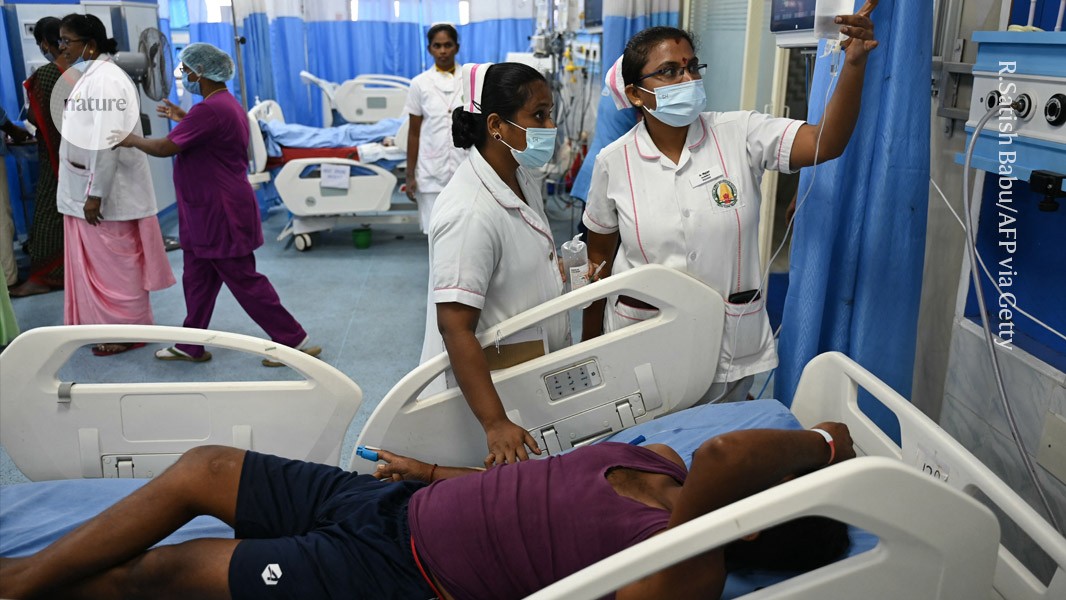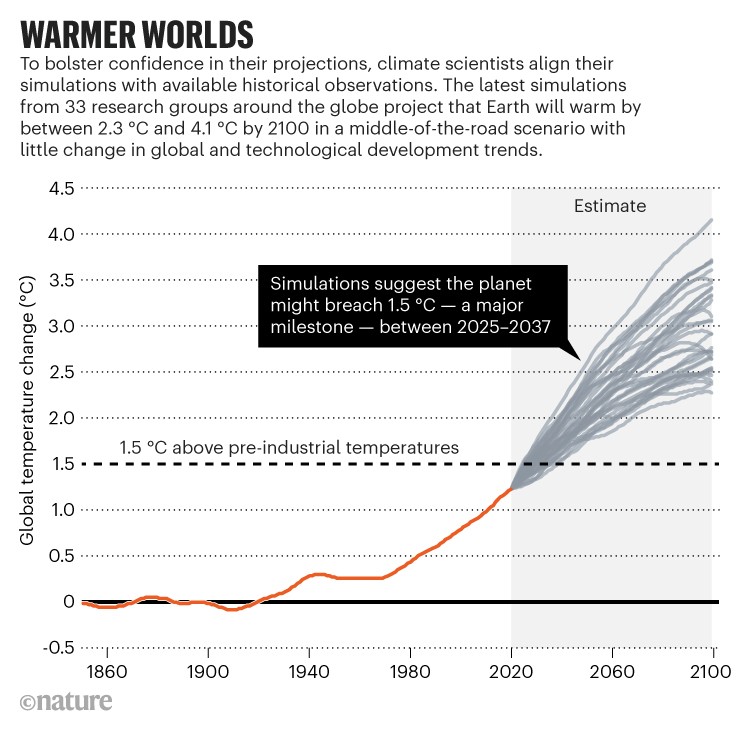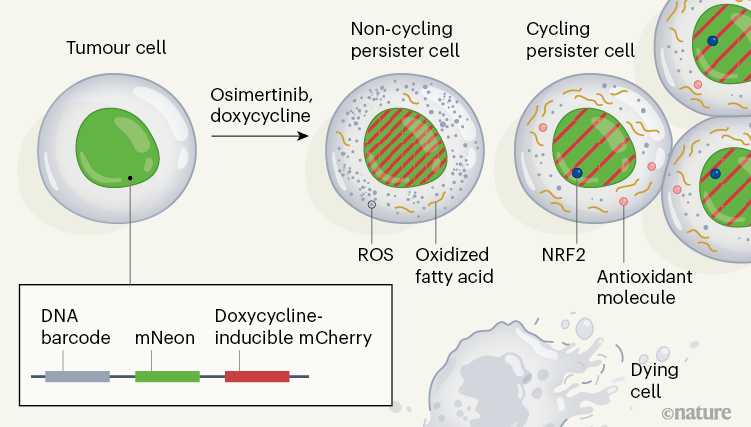Earth’s changing climate
The latest assessment from the Intergovernmental Panel on Climate Change, released this week, offers a sobering view of the planet’s shifting climate. Dependence on fossils fuels is warming the world at a pace unprecedented in the past 2,000 years, and concentrations of greenhouse gases have risen by around 50% since pre-industrial times. By some estimates, the world is on track for nearly 3 °C of warming unless governments do more to curb emissions.
Gender balance
Women are more likely to start a research career now than they were 20 years ago, according to a longitudinal study of the publishing records of millions of researchers around the world. In 2000, 33% of researchers starting their publishing career were women; that grew to 40% in recent years. But there remain some disciplines that are still dominated by men.
A colourful look at cancer
The Watermelon technique — a way to examine how some cancer cells escape destruction by chemotherapeutic drugs — was unveiled this week. Tumour cells in culture are engineered to contain a DNA ‘barcode’ along with two genes for fluorescent proteins — the green mNeon and the red mCherry. After the cells are treated with the drug osimertinib, along with doxycycline (which activates mCherry), the nature of the surviving ‘persister’ cells can be analysed. Those cells that do not divide (non-cycling cells) have higher levels of mCherry and damaging reactive oxygen species (ROS) than do those that continue to divide and proliferate. The dividing (cycling) persister cells also have lower levels of oxidized fatty acids, but show hallmarks of antioxidant defences, including expression of the protein NRF2.








More News
Chance of heatwaves in India rising with climate change
A site-resolved two-dimensional quantum simulator with hundreds of trapped ions – Nature
How AI could improve robotics, the cockroach’s origins, and promethium spills its secrets